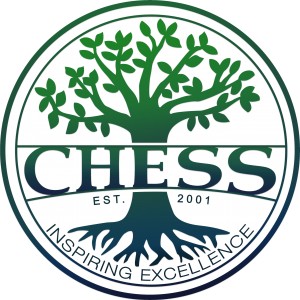About the author: Katrina Hadley has a Bachelor’s degree in Mathematics with Distinction from the University of Kansas. She began her career at the National Security Agency analyzing encrypted messages, then moved on to Accenture, helping to develop a $15M enterprise application as part of the technical team for the Tennessee Department of Corrections. She then worked with SAIC as a consultant for the FBI, designing, testing, installing, debugging, and supporting the Combined DNA Index System (CODIS). Her responsibilities also included managing installations and upgrades of CODIS throughout the forensic community in the U.S., leading training sessions, and creating training manuals. And then there were kids. She left the “working” world and views her highest accomplishment as raising her four children and homeschooling them for 13 years. During that time, she tutored Foundations and Essentials classes within the Classical Conversations homeschool program for nine years, and trained other tutors during its summer practicums. Although she hung up her homeschool hat in 2016, her combined passion for math and educating the next generation for God’s glory ensues. She is currently pursuing a Masters of Biblical and Theological Studies at Dallas Theological Seminary and has been teaching high school math classes at CHESS and Trinity Christian for the past few years.
Teaching to Change Lives
I recently read Dr. Howard Hendricks’ book, Teaching to Change Lives, in which he discusses the seven laws of teaching presented by John Milton Gregory in the late 1800’s. Dr. Hendricks was a professor at Dallas Theological Seminary, and his book is geared toward those with a ministerial vocation. However, even as a math teacher I can see the applicability of these seven laws across all subjects, especially when I view all subjects as the Lord’s revelation and when I view all Christian educators as in ministry, regardless of subject. The seven laws are easily memorized using the acronym TEACHER: the Law of the Teacher, Education, Application, Communication, Heart, Encouragement, and Readiness.
The first law is the Law of the Teacher. As a teacher who is a role model to young minds, I must continually be learning myself. I must see myself as both a teacher and a student, exuding the love of learning to my students. A teacher must be comfortable saying, “Hmm, I don’t know. But let’s find out together!” I like doing that even if I do know the answer. The focus moves from rote memorization of information (which is necessary at the start of learning anything new) and onto application of information. Students see how they can use their critical thinking skills and the tools they do have memorized to solve problems.
I must continually be learning myself. I must see myself as both a teacher and a student, exuding the love of learning to my students.
The second is the Law of Education. “True teaching is not that which gives knowledge, but that which stimulates pupils to gain it” (John Milton Gregory). My role as a teacher is not to feed students information, but to motivate and lead them on the journey of discovery. The end game is not to gain knowledge, but to discover God’s revelation of Himself outside of us and inside of us, to develop critical thinking skills as we become involved in the learning process and then to navigate applying that information in a wise manner in this world. Joy is often contagious, and even if a student isn’t excited about math, I am! My prayer is always that my joy in God’s revelation of Himself through mathematics as the God of order and logic will instill excitement in my students, whether or not they see themselves as “good at math.” It is thought that Einstein once said, “Education is not the learning of facts, it’s rather the training of the mind to think.” Thinking may be hard, but it is always rewarding!
The third law is the Law of Application. Students didn’t learn to tie their shoes by reading how to do it. They watched someone do it, and then they tried themselves over and over again until they did it. This is the point of homework, by the way. Homework, not busywork, cements concepts in the brain. Students must be involved in the process of learning and the practice of those ideas for maximum learning. Oliver Wendell Holmes Jr. said, “Once the mind has been stretched by a new idea, it will never again return to its original size.” Learning is not a passive activity, but one that should change us. The Lord calls us to be transformed daily into His image, and we can do that if our heart seeks after God’s revelation to us. And He reveals Himself to us in endless ways, if only we have eyes to see.
The fourth law is the Law of Communication. Hendricks explains, “the more thoroughly I know the concept . . . the more deeply I feel it . . . and the more consistently I practice it . . . the greater my potential as a communicator.” Moreover, he then claims the test of a great communicator is what the audience then thinks, feels, and does. A good communicator places importance on preparation and presentation. She focuses on eliminating distractions and calling each individual into the presence of the moment. Do I know my audience and what may be distracting them, or am I so involved with my subject I am oblivious to them? I must learn to be resourceful in using distractions to call students back into focus. Henricks suggests even creating a distraction by setting up the room differently every now and then or doing something unexpected to wake their brains out of the familiar. Feedback always helps me understand what I am doing well or not well for the future. My goal should always be to improve how I communicate with my audience.
The fifth is the Law of the Heart. In Henricks’ description, “Socrates summarized the essence of communication” with the teacher’s ethos (character and credentials), pathos (compassion), and logos (content). Without ethos, a student cannot trust what I am saying. Without pathos, a student does not care what I am saying because I am not showing that I care about him. Without logos, there is nothing to learn to begin with. Henricks reminds me that by committing myself to know my students individually, by earning the right to be heard in showing I care for each individual, and by my willingness to be vulnerable before them, I can be a person of impact in a young person’s life. I do not need to have a dynamic personality or a PhD.
Henricks reminds me that by committing myself to know my students individually, by earning the right to be heard in showing I care for each individual, and by my willingness to be vulnerable before them, I can be a person of impact in a young person’s life.
The sixth law is the Law of Encouragement. Henricks states, “The longer I teach, the more convinced I am that a person’s MQ – his Motivation Quotient – is more important than his IQ.” At graduation, many of our students in America are “highly qualified to be utterly useless.” Most are completely capable but have not been properly motivated to apply what they know. It’s one thing to memorize a Scripture, for example, but we must be willing to apply it to our lives. The quadratic formula is really only helpful in life if we know WHEN and HOW to apply it. Hendricks claims training consists of four stages: the telling stage, the showing stage, the doing stage in a controlled situation, the doing stage in an uncontrolled (real-life) situation. As a teacher, I must ensure I move students beyond the first two stages. That’s when I as a math teacher must be creative to motivate my students to want to take what they know to the next level.
The seventh is the Law of Readiness. This law encourages the teacher to ready the student on the subject before discussion. If students have read through the lesson already, they are able to come to class ready with questions rather than forming those questions at home afterwards. I understand how reading a Scripture passage before a seminary class lecture would be useful, but I need to reflect more on how this idea would play out in a math class. I can see how struggling students would benefit by reading through a lesson before class, but I am initially concerned it may cause boredom in more advanced students. However, it’s something to consider as I contemplate how to be a more effective teacher to change lives for the glory of God.




0 Comments